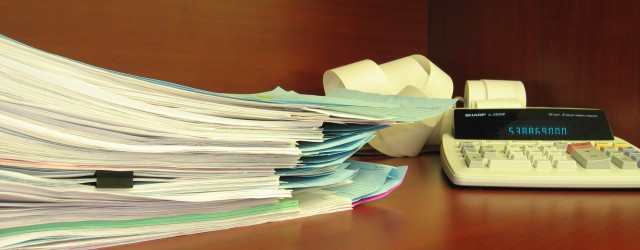
Generally, the second items on balance sheets are liabilities. If assets are things Joe owns, liabilities are what he owes. They are debts or obligations to one person, many people, or entities, which include other businesses, banks, and credit unions. They exist because those parties provided services to Joe's company. Broadly speaking, there are two liability types:
1.) Current liabilities: these include, but are certainly not limited to...
- Accounts payable: this is what Joe's company owes from its purchases at any given time. Think of it as vendor debt. To differentiate, accounts receivable consist of what people owe Joe, and accounts payable includes items Joe owes others.
- Taxes: throughout the month, Joe will sell items on which he will collect sales tax. These taxes build up as a liability. When Joe pays the state sales tax at the end of the month, this liability will zero out. (Unfortunately, in this economy, it's not always that easy.)
- Payroll liabilities: this is quite similar to taxes. Joe's payroll consists of wages, employee taxes, and employer taxes. These employer taxes are the meat of this liability. It's like a no-interest loan collection for the government. Without a doubt, the best practice for any business is to have a separate account for all tax liabilities, people tend to spend money if it's in the operating account.
- Business loans and leases: generally, these are short-term items that will be paid back in the current calendar year, or they are long-term loan balances for the current year only. (See below.)
2.) Long-term liabilities: this is the total balance of all loans and leases beyond the current fiscal year. Joe's principal - not interest - totals for equipment leases, mortgage, vehicle payments, and others, are all here. These are all the big bills. The physical vehicle, for example, is an asset, but the bill must be paid back, making it a liabilities.
To sum, liabilities are items for which Joe Gymrat needs to pay. Some, like accounts payable, can be late when money is tight. However, taxes and bank loans should always be paid ASAP, as there tends to be stiff penalties and interest for delayed payments.
The final balance sheet part is equity. The "master" accounting equation is as follows:
Total assets - total liabilities = total equity.
Equity is a company's actual worth. In the accounting world, everything must balance. Therefore, the bottom lines of the balance sheet will be equal. That means Joe's total assets, one side of the balance sheet, will equal liabilities + equity, the other side of the sheet.
With that in mind, if Joe improves his building or purchases more equipment, his assets go up. If he pays for these purchases outright, his equity will also increase since liabilities will not increase. However, if someone benches improperly and breaks his ribs, he may sue Joe. If that person wins, Joe will have to pay out. Cash is an asset; thus his assets will decrease, his liabilities (the money he owes) will increase, and his equity (total business worth) will also decrease. As you can imagine, more equity is better.
There are equity types, such as retained earnings, stocks and all things surrounding them (dividends, options), and so on. To the small facility owner, the above definition will suffice. When revenue increases, shareholders equity, capital stock, and so on, will become more important.
In the the next part(s), we will discuss sales and expenses. Please feel free to submit questions below or via the Q&A — especially if you own a company and would like some assistance.








